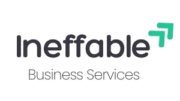📧 Email Marketing Essentials: A Beginner’s Guide to Success in 2025
✅Why Email Marketing Still Matters
In a world full of social media, reels, and ads—email marketing is still one of the most powerful tools for connecting with your audience. Why? Because it’s personal, direct, and gives you full control of the conversation.
Whether you’re a small business, a digital marketer, or a creator—email marketing helps you:
- Build relationships with your audience
- Share offers, updates, and value
- Drive traffic and sales
In this guide, we’ll walk you through the essential building blocks of email marketing. It’s simple, practical, and perfect for beginners in 2025.

🧱 1. Build a Quality Email List
Your email list is your digital gold. Instead of buying emails (which is a bad idea), build your own list of interested and engaged people.
🔹 How to Start Building a List:
- Add a sign-up form on your website or blog
- Offer a lead magnet (e.g., free eBook, discount, checklist)
- Use pop-ups or exit-intent forms
- Promote your email list on social media
✅ Pro Tip: Use tools like Mailchimp, ConvertKit, or Brevo (formerly Sendinblue) to collect and manage subscribers.
🧠 2. Understand Your Audience
Don’t just send emails to everyone the same way. Understand your audience’s:
- Interests
- Problems
- Goals
This helps you create relevant and useful content that people want to open and read.
Use these tools:
- Surveys (Google Forms, Typeform)
- Sign-up preferences
- Behavior tracking (who clicks on what)
✍️ 3. Craft a Strong Subject Line
Your subject line decides if your email gets opened or ignored.
🔥 Tips for Great Subject Lines:
- Keep it short (under 50 characters)
- Use curiosity or urgency:
“You’re missing out on this deal…”
“Only 24 hours left!” - Ask questions:
“Want more traffic in 2025?” - Use personalization:
“Hey Alex, your free guide is here!”
Avoid spammy words like “FREE!!!” or “Buy Now” that could land your email in the spam folder.
🧾 4. Write Valuable Email Content
Once they open the email, the content must deliver value.
🧩 Structure of a Good Email:
- Greeting (personalized if possible)
- Hook or main message
- Value or offer
- Call to Action (CTA) – what should they do next?
- Sign-off with your name and brand
🎯 Types of Email Campaigns:
- Newsletters
- Product announcements
- Offers and discounts
- Educational series (email courses)
- Feedback or surveys
- Thank-you emails
Keep your tone friendly, human, and helpful. Write like you talk.
📢 5. Include a Strong Call-To-Action (CTA)
Every email should have one clear CTA. Tell people exactly what to do:
- “Download the guide”
- “Shop the sale”
- “Book your free call”
- “Read the full blog here”
Use buttons or highlighted links so it’s easy to click.
📤 6. Design & Mobile Optimization
Over 70% of emails are opened on mobile. Your email must look great on small screens.
✅ Design Tips:
- Use a clean layout with white space
- Break text into short paragraphs
- Use buttons instead of long links
- Keep images light and fast-loading
- Test on mobile before sending
Use pre-built templates from platforms like Mailchimp, Brevo, or ConvertKit.
⏱️ 7. Timing & Frequency
Send emails when your audience is most likely to open them.
📆 Best Times (in general):
- Weekdays: Tuesday to Thursday
- Mornings (8–11 AM) or early afternoons
Don’t overdo it—1 to 2 emails per week is ideal for most businesses.

🧪 8. Test, Analyze, and Improve
You won’t get it perfect on Day 1—and that’s okay!
Track and measure your performance:
📊 Key Email Metrics:
- Open Rate: % of people who opened the email
- Click-Through Rate (CTR): % who clicked a link
- Bounce Rate: emails that didn’t reach the inbox
- Unsubscribe Rate: people who opted out
Use A/B testing to compare subject lines, layouts, and CTAs.
🔄 9. Use Automation to Save Time
Email automation helps you reach people at the right time—without manually sending emails every day.
🤖 Examples of Automated Emails:
- Welcome series when someone signs up
- Birthday wishes or discounts
- Cart abandonment reminders for e-commerce
- Re-engagement emails for inactive users
Tools like Mailchimp, ActiveCampaign, and Brevo let you set up these flows easily.
🔐 10. Follow Email Marketing Rules
To avoid being marked as spam or violating laws, follow these best practices:
🚨 Important Rules:
- Always get permission before sending emails (use opt-in forms)
- Include an unsubscribe link in every email
- Include your business name and address in the footer
- Don’t use misleading subject lines
In 2025, privacy laws are stricter. Make sure you follow GDPR (Europe), CAN-SPAM (US), and India’s DPDP rules.
📈 Email Marketing Tools to Try in 2025
Here are the top platforms to manage your email campaigns:
| Tool | Best For | Free Plan? |
|---|---|---|
| Mailchimp | Beginners & e-commerce | Yes (500 contacts) |
| Brevo (Sendinblue) | Automation & SMS | Yes |
| ConvertKit | Creators & bloggers | Yes |
| MailerLite | Simplicity & affordability | Yes |
| ActiveCampaign | Advanced automation | No (Free trial only) |
💬 Real-Life Use Case: A Café Using Email
Let’s say you own a café.
Here’s how you can use email marketing:
- Send a weekly menu update
- Offer birthday discounts
- Share a story or behind-the-scenes photo
- Invite people to a special event
- Send an exclusive deal for your top customers
You don’t need to be a big brand. Email works for small businesses too.
🧠 Conclusion: Email Is Still King (If You Use It Right)
Email marketing might seem old-school—but it works better than ever in 2025. Why?
Because it’s personal, cost-effective, and builds real connections.
If you follow the essentials we covered:
- Grow your list honestly
- Send valuable, well-designed emails
- Analyze and improve every week
You’ll start seeing more engagement, better customer relationships, and higher sales.

🙋 FAQ: Email Marketing Basics
Q1: How often should I send emails?
Once or twice a week is perfect for most brands. Don’t overwhelm your audience.
Q2: What’s the best day to send emails?
Tuesday to Thursday, during mid-morning (around 10 AM), works well for many businesses.
Q3: Do I need an email list to start?
Yes. Start small with 50–100 contacts. Quality matters more than quantity.
Q4: Is email marketing free?
Most tools offer free plans. You can start with Mailchimp, ConvertKit, or Brevo.
